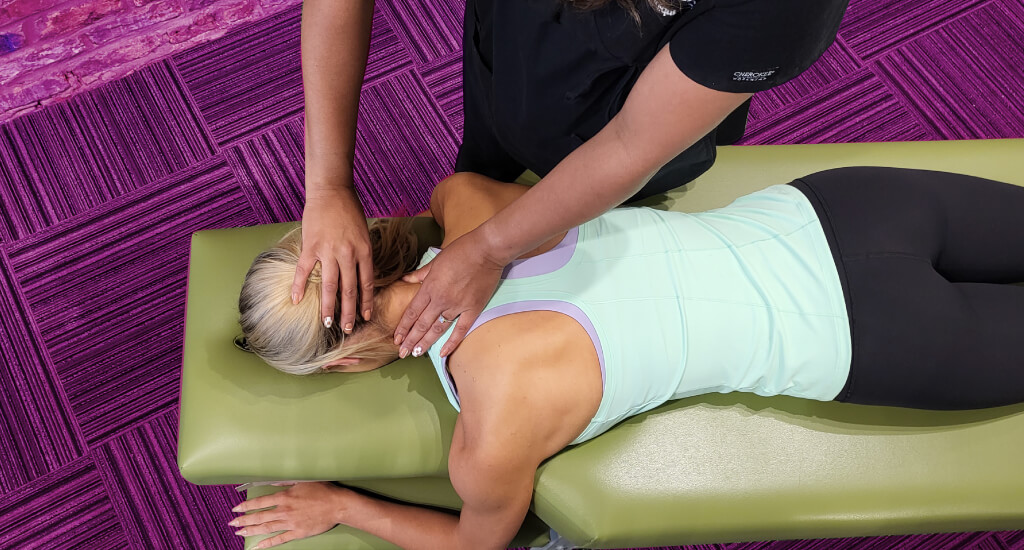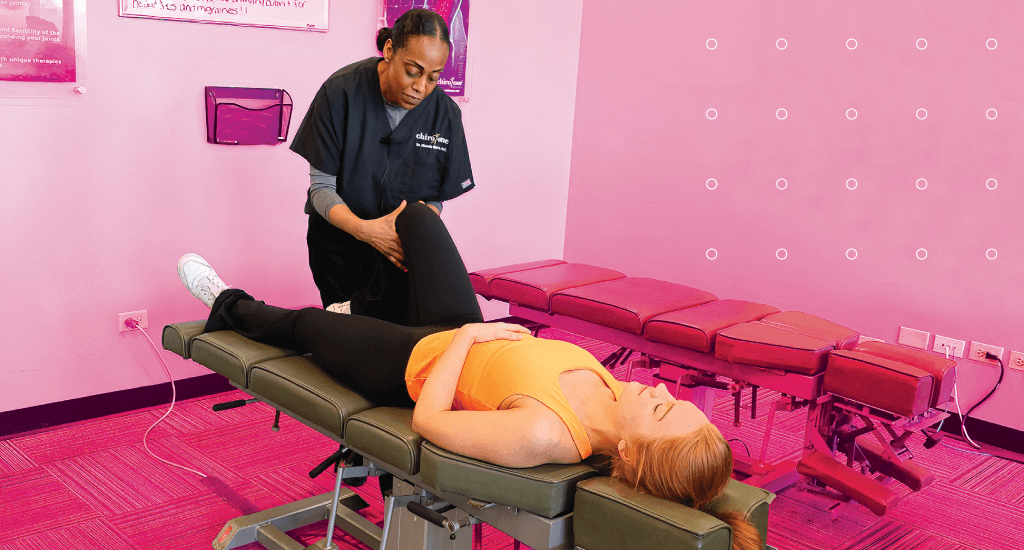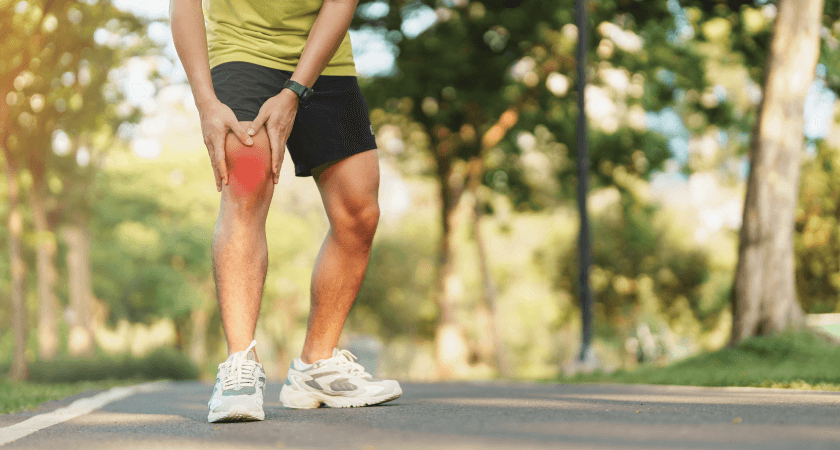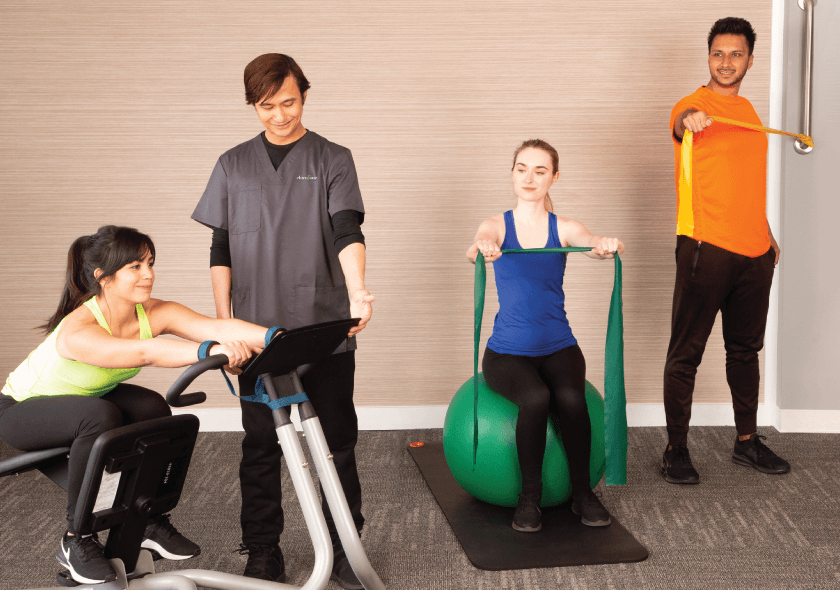
Can Chiropractic Care Help with Jaw Pain?
Can chiropractic care help with jaw pain? Dr. Robert of Chiro One shares the top causes of jaw pain, how to prevent it, and how chiropractic can help you find relief without surgery.

From TMJ (dysfunctions of the jaw) to ankle sprains, tennis elbow, and everything in between, joint pain will affect just about everyone at some point in their lives. In fact, did you know that upwards of 20% of the global population is living with patellofemoral pain (also known as Runner’s Knee) right now 1? But should you see a chiropractor for joint injuries?
In today’s post we’re exploring everything from sprains and strains to overuse injuries, and when – and how – chiropractic care can help you find relief.
One of the most common misconceptions about chiropractic care is that we only treat back pain or neck pain. The truth? Chiropractic care can relieve pain from head to toe (literally – we treat headache pain and foot pain, too.)
Before we talk about how an adjustment works, let’s explore the most common types of joint pain we see every day, and what causes them.

These are the types of joint pain most of us dread: an accident or injury that disrupts our lives and leaves us unable to move through our daily routine as normal. Depending on the severity of your injury, without immediate proper treatment, your pain and mobility issues can even become chronic.
These types of injuries include dislocations, fractures, nerve injuries, tears to the ligaments or muscles, cartilage tears, and tendon injuries (such as tears or ruptures). Among the most common are:
Tears to the Rotator Cuff Tendon. The rotator cuff is actually an entire group of muscles and tendons that surround the shoulder joint. Their job is to keep the arm bone and shoulder socket firmly connected. Rotator cuff injuries are common in people whose daily routine includes repetitive overhead motions – painters, carpenters and auto mechanics all come to mind. As we age, we become more susceptible to rotator cuff tears, and to falls, which are also a very common cause of rotator cuff injuries.
Separated Shoulder. This is an injury to the acromioclavicular (AC) joint – the place where your collarbone and shoulder blade come together. A separated shoulder is often caused by or connected with a collarbone injury.
Frozen Shoulder. In the case of frozen shoulder (adhesive capsulitis), abnormal bands of tissue (adhesions) build up in the joint, causing pain and preventing your shoulder from moving freely.
Tears in the Meniscus – wedge-shaped pieces of cartilage which act as shock absorbers between your femur and tibia.
For acute joint injuries like the ones above, chiropractic care can provide effective pain relief and help restore joint function – and even prevent future injury. Here’s how.
Chiropractic adjustments can reduce inflammation in and around the injured area to relieve pain.
Gentle adjustments can also help improve the range of motion and increase strength in the muscles and tendons around the injured joint, aiding in recovery.
For joint pain from conditions like Frozen Shoulder, a chiropractor can relieve pain and improve mobility with treatments like the Niel Asher Technique, which involves the manipulation of the joints and muscle tissues to help reduce pain and break up the adhesions that are restricting movement.
Chiropractors can successfully treat meniscal or other soft tissue tears without surgery but employing treatments like Active Release Technique, FAKTR, dry needling and more.
But what about non-acute injuries – the ones that are less likely to result from an accident, and more likely to occur from poor ergonomics or poor posture?

Overuse injuries are also classified as microtraumas – things like tiny tears in your muscle fibers, stress on your tendon, or the bruising of a bone. They’re called overuse injuries because they typically result from repetitively using your joints in the same manner or motion. Poor posture, poor ergonomics, or a sedentary lifestyle can all contribute to overuse injuries.
Carpal tunnel syndrome, which occurs when one of the major nerves to the hand — the median nerve — is squeezed or compressed as it travels through the wrist.
Epicondylitis (Tennis Elbow) – swelling of the tendons that bend your wrist backward from your palm (often caused by the motions used in swinging a golf club or pitching a baseball.) This is also common in desk workers (think mouse clicks and scrolling), or parents who carry heavy loads (like a toddler) on one arm.
Osgood-Schlatter disease is one of the most common causes of knee pain in adolescents. It happens when a tendon in the knee (the patellar tendon) pulls against the top of the shinbone and causes pain in the knee and the upper shin where new bone is forming, called the growth plate. The pulling causes pain and inflammation (swelling and irritation). A hard bump may also grow right below the knee as the growth plate hardens.
Patellofemoral syndrome (Runner’s Knee). This condition results in pain at the front of the knee, around the kneecap, and is very common to athletes (hence its name.)
Shin splints are caused by repetitive stress on the shinbone and the connective tissues that attach your muscles to the bone. Have you ever picked up a new activity and jumped in headfirst without proper warm up, preparation, or stretching? If so, you may have experienced shin splints.
Stress fractures are tiny cracks in a bone caused by repetitive force. These are often caused by poor form and improper athletic training.
Tendinitis is the inflammation of a tendon caused by overuse, and you may be surprised to learn that it can occur anywhere in your body – from large joints like the knee and hip, right down to your fingers.
Postural Issues. Improper posture can affect the alignment of your body, causing your knees to twist or rotate improperly, leading to injuries or pain. Poor posture can also limit your mobility, leading to shoulder disorders and shoulder pain. It is also a common cause of recurring headache, neck, and back pain.
Chiropractic care not only treats the pain and inflammation of an overuse injury; your chiropractor can diagnose the root cause of your pain and treat it at the source for lasting relief.
Misalignments can create imbalances in your joints that put added pressure on the nerves, muscles, and tendons. Adjustments correct those misalignments and imbalances to relieve pressure and pain and improve function.
Conditions like Runner’s Knee, Carpal Tunnel Syndrome, Tennis Elbow and more can all be treated (and prevented) by ensuring proper spinal alignment for good posture, and proper alignment and function of the surrounding joints.
These disorders are typically unrelated to your day-to-day routine and are unlikely to have an acute cause (like a slip and fall or sports injury.) They do, however, cause pain, mobility impairments, and can significantly impair your quality of life. Among the most common degenerative or autoimmune causes of joint pain are:
Bursitis. Bursitis causes inflammation of the bursae, small sacs of fluid that cushion and lubricate the joints. While bursitis can result from overuse, it is also commonly caused by aging, infection, or pressure on the bursa. Pressure on the bursa can result from poor ergonomics, poor posture, or misalignments in the spine and joints, for example. Chiropractic care can reduce inflammation from bursitis and help improve your range of motion.
Fibromyalgia. This is a chronic disorder that causes pain and tenderness throughout the body, as well as fatigue and trouble sleeping. Chiropractic care can help patients with fibromyalgia sleep more comfortably and improve their mobility and function. It can also relieving inflammation, and promote proper alignment to minimize pressure on muscles and nerves.
Gout. Caused by high levels of uric acid in the blood, gout can lead to severe pain, swelling, and stiffness in the joints. Chiropractic care can help relieve the swelling, inflammation, and pain of gout, as well as promote proper alignment of the joints to relieve pressure and reduce wear and tear.
Arthritis. Both types of this condition cause pain and inflammation and can affect any joint in the body.
A chiropractic adjustment is a high velocity, low amplitude thrust to your misaligned joint or vertebra. Simply put, we unlock your locked joint.
By restoring proper alignment, chiropractic adjustments relieve pressure on your nerves and muscles to relieve pain, and restore motion, function, flexibility, and balance. Adjustments can also break down scar tissue in joint capsules and surrounding soft tissue, allowing even more fluid motion.
Benefits of chiropractic adjustment for joint pain include:

When treating joint pain, it’s important to go beyond immediate pain relief. For lasting relief, it’s essential to treat pain at the source. That’s why Chiro One takes a holistic approach to relieving joint pain by combining gentle adjustments with active therapies. When performed regularly, the active therapies prescribed as part of Chiro One’s personalized care plans can:
Living with joint pain? Comprehensive chiropractic care from Chiro One could be right for you if:
If you’re ready for relief from joint pain, chiropractic care from Chiro One may be able to help. Find a clinic near you or book an appointment today.
Subscribe and get news, articles & offers sent right to your inbox each month.
"*" indicates required fields
By subscribing you are agreeing to the Terms and Conditions and Privacy Policy.